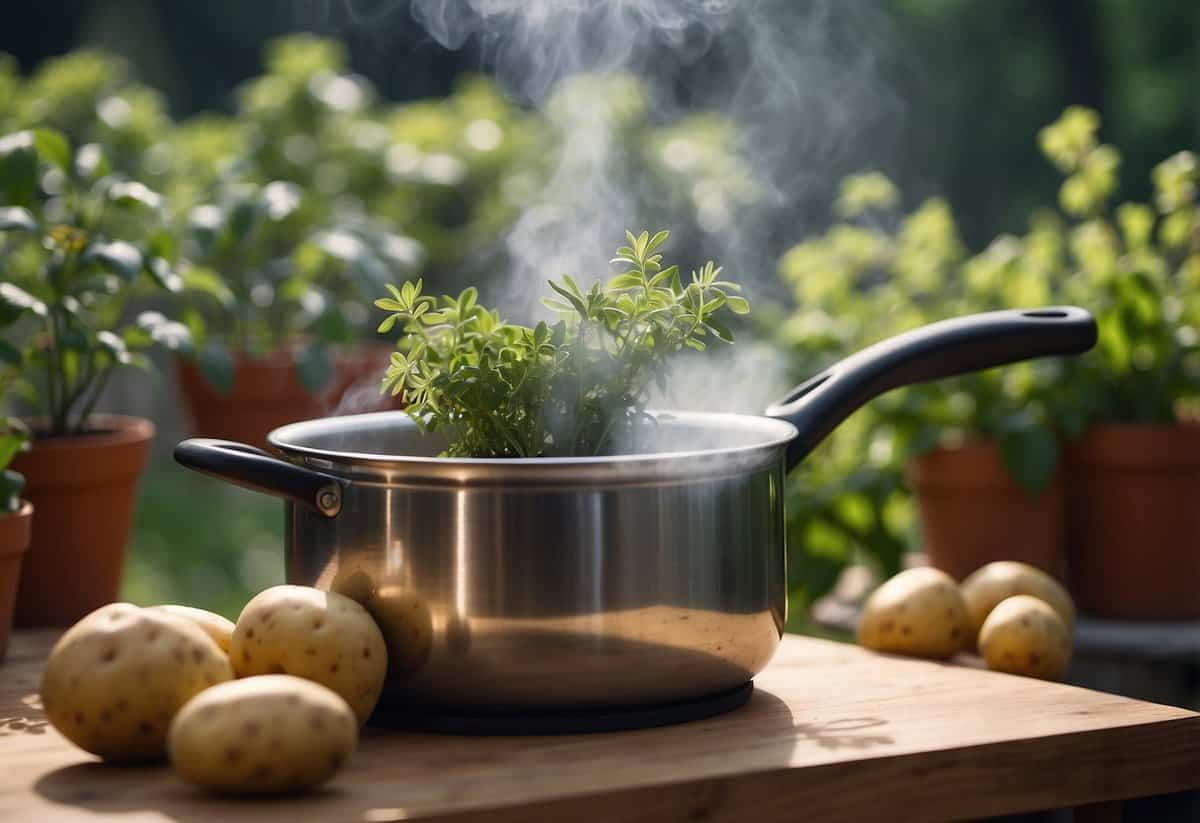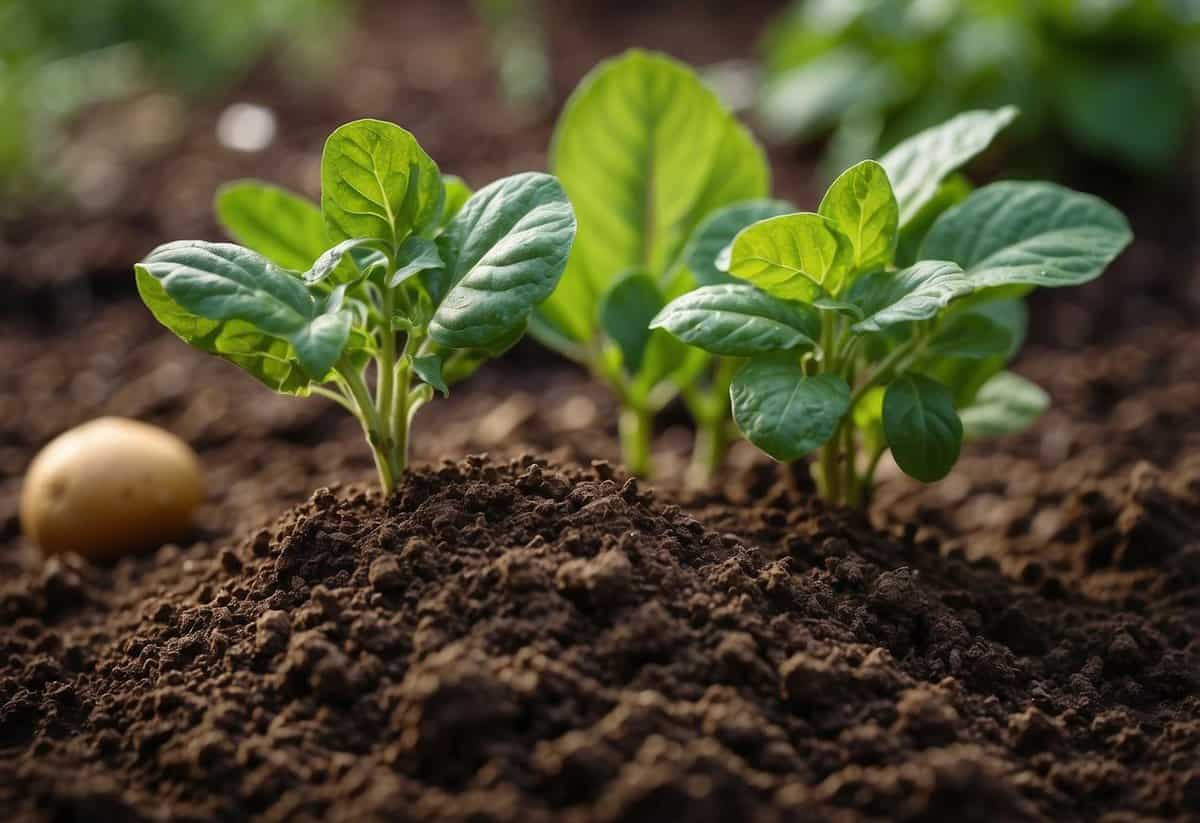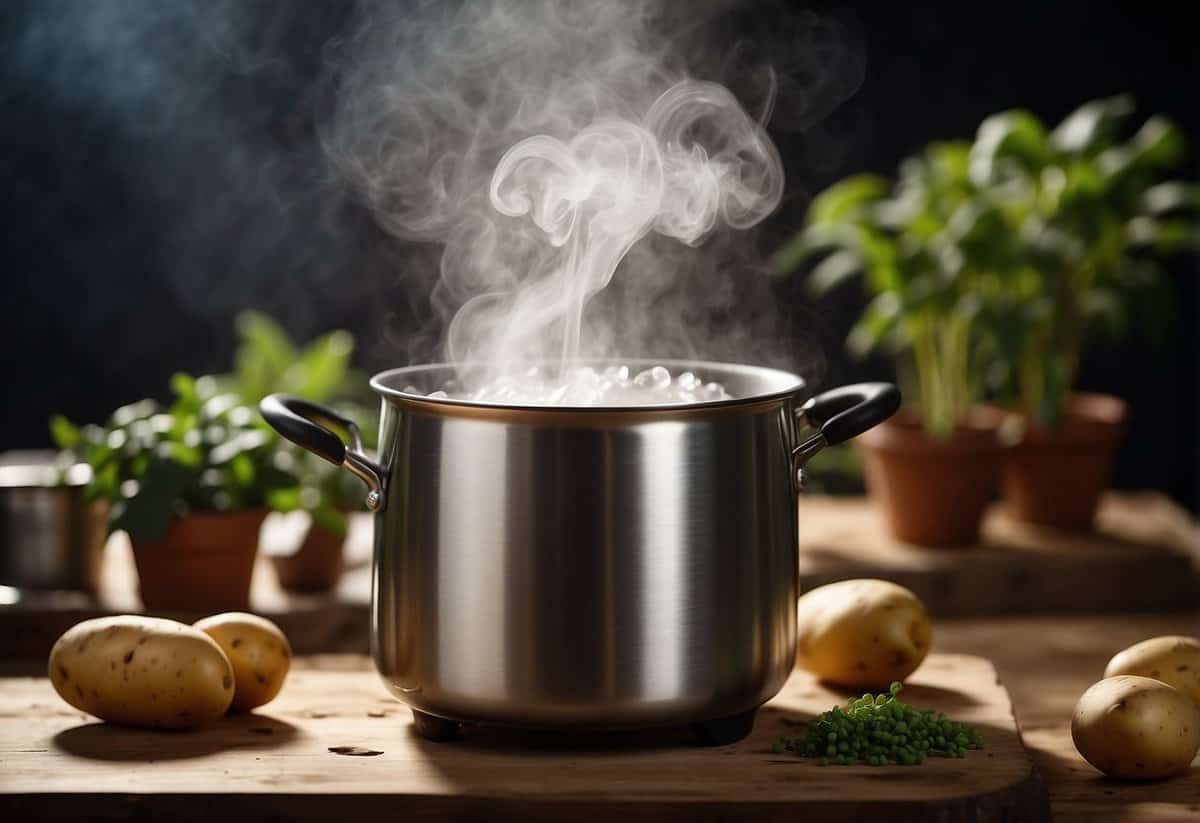Is Boiled Potato Water Good for Plants? Discover the Surprising Benefits
Ever thought about giving your plants a boost with something from your kitchen? Many gardeners are now using boiled potato water to help their plants thrive. Boiled potato water is rich in vitamins and minerals that promote plant growth in a natural and organic way. This simple trick can support both indoor and outdoor plants, giving them essential nutrients they might be missing.

You might be wondering how adding potato water to your gardening routine can make a difference. When potatoes are boiled, they release vitamins B1, B3, B6, and minerals like potassium and phosphorus into the water. These nutrients are beneficial for various plants, including vegetables, fruits, and even your indoor houseplants.
Using potato water is easy. Just collect the water after boiling potatoes, let it cool, and then use it to water your plants. Whether you have a lush garden or a few potted plants, potato water can be a fast and effective way to give them the extra care they need. Learn more about the benefits and methods of using potato water for your plants at Flourishing Plants.
Nutritional Content of Potato Water

Boiled potato water offers various nutrients essential for plant health. Understanding the minerals and vitamins it contains and how it impacts soil nutrient levels is crucial for effective gardening.
Minerals and Vitamins in Potato Water
Potato water is rich in several key nutrients that benefit plant growth. Potassium is one of the most important elements found in potato water. This mineral helps regulate moisture levels in soil and strengthens plant stems and leaves.
Another key nutrient is phosphorus, which supports root development and boosts flowering and fruiting in plants. There’s also magnesium, which is vital for photosynthesis and maintaining strong, healthy plants.
Potato water contains small amounts of iron, which is essential for chlorophyll production, and calcium that helps in cell wall formation and root health. Additionally, it can contain trace amounts of various vitamins that assist in overall plant vitality.
Impact of Boiled Potato Water on Soil Nutrient Levels
Adding boiled potato water to soil can enhance its nutrient profile. The potassium in the potato water helps with water retention in soil, ensuring that plants stay hydrated longer. This is particularly beneficial for dry or sandy soils.
Phosphorus from potato water can improve soil structure and aid in the growth of root systems, which is particularly beneficial for flowering and fruiting plants. Magnesium helps soil enzyme activity and assists plants in taking up other essential nutrients more effectively.
Potato water may also slightly raise the iron and calcium levels in the soil, promoting stronger plant growth. However, be cautious not to add potato water with any salt residue, as this can harm plants. Regularly monitoring soil health will ensure the best results when using potato water.
By leveraging the nutrients from boiled potato water, you can give your plants a natural, affordable, and effective fertilizer.
Benefits of Potato Water for Plants

Potato water offers multiple benefits for your plants, such as acting as a natural fertilizer and promoting healthy growth. The nutrients in potato water can make your garden thrive.
Potato Water as a Natural Fertilizer
Using potato water as an organic fertilizer helps introduce vital nutrients to your plants. When you boil potatoes, the water collects nutrients like magnesium, calcium, and potassium.
Magnesium aids in photosynthesis, while calcium strengthens cell tissues. Potassium regulates soil moisture and fortifies stems and leaves. You can make your own nutrient-rich potato water at home.
After boiling potatoes, let the water cool to room temperature. Pour the cooled potato water into a watering can or spray bottle. Mist or water your plants with this solution for maximum benefits. You can use potato water to nourish both indoor and outdoor plants.
Enhancing Plant Growth and Health
The minerals in potato water support plant growth and health by enriching the soil. Magnesium helps with photosynthesis, leading to lush, green foliage. Calcium is crucial for strong cell walls, promoting overall plant health.
Potato water contains starch, which can benefit the soil’s structure and help retain moisture. This is especially useful for plants in dry conditions. Using potato water regularly helps ensure your plants get a consistent supply of these essential nutrients.
By providing your plants with these important elements, you give them a better chance to flourish. Proper use can make a noticeable difference in your garden’s vitality and productivity.
How to Use Potato Water in Your Garden

Using potato water in your garden can provide nutrients to your plants and enrich your compost. Here’s how to make the best use of it.
Proper Methods for Watering with Potato Water
First, collect the water after boiling potatoes. Let it cool to room temperature, as hot water can harm plant roots. Once cooled, strain the water to remove any leftover potato pieces.
You can use a watering can or a spray bottle for applying potato water. If using a watering can, pour the potato water directly at the base of your plants. This method is especially useful for garden plants like vegetables and fruits. If you prefer a spray bottle, mist the leaves of your indoor plants for added nutrients.
Tip: Make sure to water your plants when the soil is dry for the best results. Avoid overwatering, as it can lead to root rot.
Incorporating Potato Water into Compost
Potato water can also be a great addition to your compost pile. The nutrients in the water help speed up the composting process. Simply pour the cooled potato water over your compost heap or bin.
Mix the compost well after adding the potato water. This helps distribute the moisture and nutrients evenly throughout the compost pile. The added liquid can help break down organic materials more quickly, aiding in the creation of rich, fertile compost.
Remember: Do not add too much potato water at once. Small, regular additions are best to avoid making the compost too wet. Balance it with dry materials like leaves or cardboard to maintain proper moisture levels. This ensures a healthy composting environment, enriching your garden soil in the long run.
Preparing Potato Water for Plants

Using potato water as a plant fertilizer involves a few key steps. You need to strain the water to remove any potato residues and properly cool it to prevent harming your plants. Proper storage also ensures the potato water stays fresh until you’re ready to use it.
Steps to Strain and Cool Potato Water
First, after boiling your potatoes, set aside the leftover water. This water will be starchy and full of nutrients beneficial for your plants.
Place a strainer over a large bowl and pour the hot potato water through it. This will help remove any remaining potato pieces or excess starch. Be careful to strain the water while it is still warm but not boiling.
Once strained, allow the water to cool to room temperature. Hot water can damage plant roots and beneficial soil organisms, so this step is crucial.
Check the temperature of the strained water. It should be cool to the touch before using it for watering your plants. Cool, starchy water contains nutrients like magnesium and calcium, which are great for plant growth.
Storing Potato Water for Later Use
If you have more potato water than you need right now, storing it correctly can keep it useful for future plant watering. Pour the cooled, strained potato water into a clean container with a lid.
Use glass jars or plastic bottles for storage. Make sure they are sealed tightly to avoid any contamination.
Label the container with the date you prepared it. Stored potato water should be used within one week to ensure it remains nutrient-rich and free from any microbial growth.
Keep the container in the refrigerator. Cold storage helps maintain the water’s freshness and nutrient content. If the potato water develops an unpleasant odor or appearance, discard it and make a fresh batch.
Environmental and Economic Advantages

Using boiled potato water for your plants offers both environmental and economic benefits. It is sustainable, cost-effective, and reduces kitchen waste.
Sustainability and Cost-Effectiveness
Using potato water is a great way to be environmentally friendly. Instead of pouring the water down the drain, you can recycle it for your plants. This practice saves you money because you won’t need to buy as much fertilizer. Potato water contains nutrients like potassium, which helps plants grow.
It’s also cost-effective because you’re using something you already have. By repurposing the water, you reduce the need for chemical fertilizers. This not only saves money but also minimizes the impact on the environment. Using potato water is an easy and practical way to support sustainable gardening.
Reduction of Kitchen Waste
Recycling potato water helps reduce kitchen waste. After boiling potatoes, you usually throw the water away. Instead, you can use it to water your plants. This practice turns kitchen scraps into a valuable resource.
Adding potato water to your gardening routine helps you make the most out of what you have. It supports a more sustainable lifestyle by reducing waste. Instead of cluttering your compost pile, you give the water a new purpose. This approach is both eco-friendly and practical, turning waste into something beneficial for your plants.







